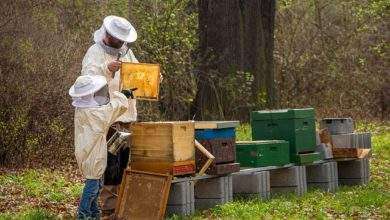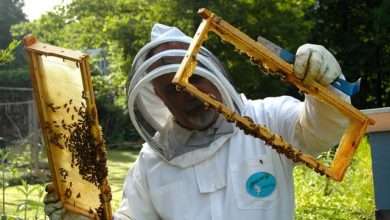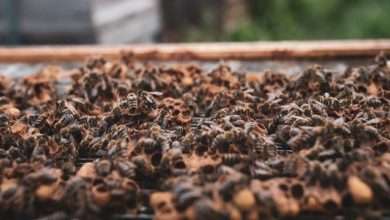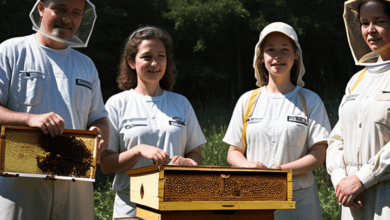Beekeeping in Medieval Times
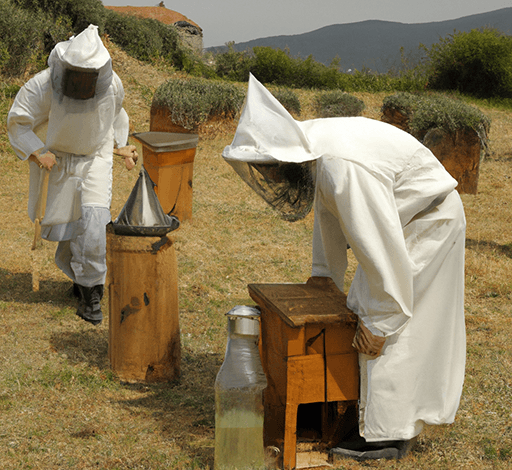
Beekeeping was a popular practice in Medieval times and played an important role in society. Not only was honey a valuable commodity, but beeswax was also used for candles, ointments, and even as a form of currency. Beekeepers were highly respected in society and were often seen as skilled craftsmen.
In this article, we will explore the fascinating world of beekeeping in Medieval times. We will delve into the different types of hives used, the types of bees that were kept, and the important role that beekeepers played in society.
Importance of beekeeping in the medieval economy
Beekeeping became a profession in the Middle Ages. It was the common man’s occupation, and its scope went far beyond household requirements. Bee colonies were kept for honey production, and the surplus was traded extensively.
A symbol of wealth and power
- Beekeeping was a symbol of wealth and power. In ancient times, honey was considered an expensive luxury due to its rarity. Beekeeping gradually became a source of income and power for those who controlled the industry.
Uses of beeswax and honey
- In medieval times, beeswax and honey had various uses besides being a part of the diet. Beeswax was used to make candles and cosmetics, while honey was added to mead, the most popular alcoholic beverage of the time. Honey was also used to preserve fruits and to make a variety of medicines.
Importance in agriculture
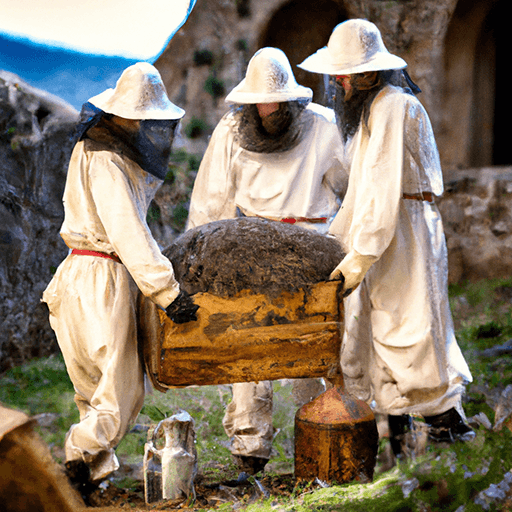
- Beekeeping had immense importance in agriculture. Apart from being major pollinators, bees provided honey, wax, and beeswax, which were crucial products in the agriculture industry, especially in the production of wine.
Beekeeping in the urban and rural areas
- Beekeeping in medieval times was not restricted to urban areas alone. Rural areas too had thriving beekeeping businesses. Beekeeping typically flourished in areas of high flower density, which were mainly in rural areas. The urban areas depended on the rural areas for their supply of honey.
Beekeeping in Medieval Europe
An Insight into the world of Apiculture
A Vital Commodity
- Beekeeping was an important industry during the medieval period especially in Europe. Honey was a valuable commodity and demand was huge, primarily for food but also for medicinal use in ointments and poultices. Beeswax was also used for candles and sealing wax.
Evolution of Beekeeping
- During the early Middle Ages, beekeeping was mostly unorganized and the bees were kept in hollow tree trunks or logs. These hives were mostly difficult to access and manage. The 13th century saw the introduction of man-made hives and better beekeeping techniques. Clay and straw bee skeps became popular and were an improvement on the hollow logs previously used.
Monastic Beekeeping
- One of the most significant developments in beekeeping was the rise of monastic beekeeping. Medieval monasteries had gardens and forests that were ideal for keeping bees. Many monks realized the value of bees and how important a bee colony could be to an economy of the monastery.
- The monks not only perfected the manufacture of hives but also honey as well, adding herbs and spices for medicinal use. Honey wine (mead) was also brewed in monasteries.
Beekeeping Regulations
Beekeeping regulations were put in place by government and local authorities in the late Middle Ages. This was due to the increasing importance of this trade that was bringing revenue to individuals and institutions.
As urbanization developed, people began to keep bees in their gardens, and regulations regarding the placement of hives, distances between them, and pest control were enforced.
Beekeeping Myths and Legends
Medieval Europeans had many beliefs and superstitions regarding bees. For instance, on hearing the death of a beekeeper, it was believed that one of his bees should be brought, or else, the rest would die or fly away. Another superstition was that bees were messengers of God and the Holy Ghost.
The Medieval Legacy
The medieval legacy on beekeeping is still prevalent today, many beehive designs and techniques were created for the first time during the medieval period. The importance of bees was also cemented, and laws governing beekeeping have been passed down to modern times.
The use of skeps for beekeeping
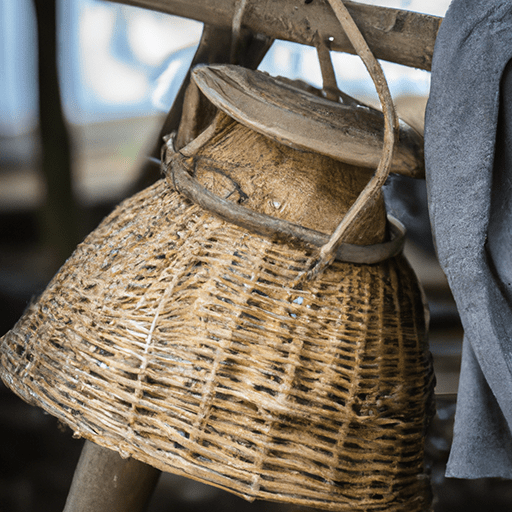
Skeps have been used for beekeeping since ancient times. They were made of materials that were readily available such as straw, wicker, or any other plant-based material. Skeps were essentially baskets that were made to house bees. Due to their durability and affordability, they became popular amongst beekeepers. They were used extensively in Europe, and some countries like the UK even had laws governing their use.
Construction of Skeps
Skeps are made of straw or wicker and have a conical shape. They have a small opening at the bottom through which the bees enter and exit. The top is closed with a layer of straw to protect the colony from rain or harsh weather. The colony is built within the skep by the bees themselves, by attaching their honeycombs to the inner walls.
Advantages of Skeps
The use of skeps for beekeeping has many advantages:
- Portability: Skeps are lightweight and can be easily transported.
- Affordability: Skeps are relatively cheap to purchase or construct.
- Low Maintenance: Skeps do not require heavy maintenance once established.
- Natural: Skeps provide bees with a natural environment to build their colonies.
Disadvantages of Skeps
While skeps have many advantages, they also have some downsides:
- Inspection Difficulty: Skeps have a closed top, making it difficult for beekeepers to inspect the colony.
- Disease Risk: Skeps lack ventilation and can lead to the spread of disease within the colony.
- Harvesting Honey: Harvesting honey from a skep can be challenging as the combs are attached to the skep walls.
- Illegal: Skeps are illegal in many countries as they do not meet modern regulations on hive design.
Techniques and tools used for beekeeping
Here, we will explore the techniques and tools that medieval beekeepers used to maintain their hives and extract honey.
Skeps
- The most common type of hive used for beekeeping in medieval times was the skep.
Smokers
- Smoking the bees was a common technique used to calm them while working with the hives. Beekeepers would use a smoker made of various materials, such as dried herbs, twigs, or even animal dung, to waft smoke around the bees. The smoke would cause the bees to evacuate their hive, making it easier for beekeepers to work with the hive and harvest the honey.
Bee Brushes
- Bee brushes were used to gently brush the bees off the honeycomb before harvesting the honey. These brushes were made from soft animal hair or plant fibers and were generally very large, as beekeepers needed to cover a lot of area to safely remove the bees.
Honey Extractors
- As beekeeping became more sophisticated, so did the tools used to extract honey from the hives.
- In the middle ages, it was common to extract the honey by crushing the honeycomb and then straining the honey to remove any wax or bee parts. Beekeepers used a device called a honey press or honey extractor to crush the honeycomb and extract the honey from the comb.
Beekeeping Suit
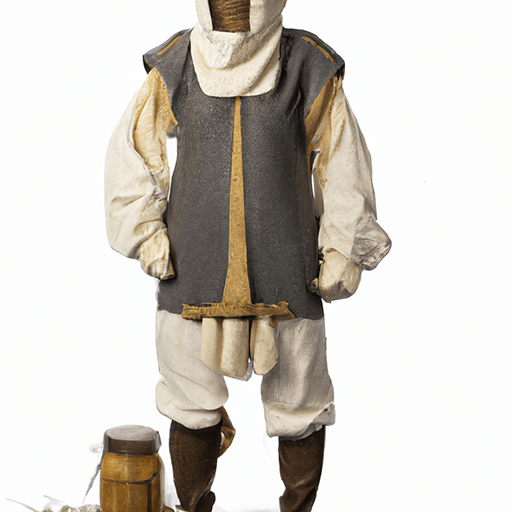
- In medieval times, beekeeping was an activity that was fraught with danger. Bees could easily sting a beekeeper, causing severe discomfort, and in some cases, death. Therefore, beekeepers would wear a protective suit that was made of leather or thick materials that would prevent bees from stinging them.
The value of honey in the medieval world
Honey has been known for its sweet taste and various health benefits for thousands of years. But did you know that in the medieval world, honey held a special place, not just in the kitchen, but also in medicine and even religion? Here are a few reasons why honey was highly valued in medieval times:
- Culinary Uses
Honey was mainly used as a sweetener, either as a substitute for sugar or as a flavor enhancer. In fact, the earliest known recipe for mead, a fermented honey drink, dates back to the Anglo-Saxon era in England. Honey was also used to preserve fruits and vegetables by coating them in a honey syrup.
- Medicinal Properties
In medieval medicine, honey was considered a valuable remedy due to its antibacterial and anti-inflammatory properties. Honey was used to treat wounds, burns, and even sore throats.
Additionally, honey mixed with wine or vinegar was used as a cough syrup, and honey mixed with various herbs was used to treat ailments such as constipation and diarrhea.
- Religious Significance
Honey played a significant role in religious practices, especially in Christianity. In the Bible, the promised land is often referred to as the “land flowing with milk and honey.” Honey was seen as a symbol of prosperity, and it was used as an offering to the gods. Honey was also used to make mead, which was believed to be a gift from the gods.
- Trade and Commerce
Honey was a valuable commodity, especially in medieval Europe, where it was traded for other goods, such as spices and textiles. Beekeeping was a profitable business, and bees were kept in hives or skeps, which were made from woven straw. In some parts of Europe, beekeeping was regulated by law to ensure the quality of honey.
The relevance of medieval beekeeping practices today.
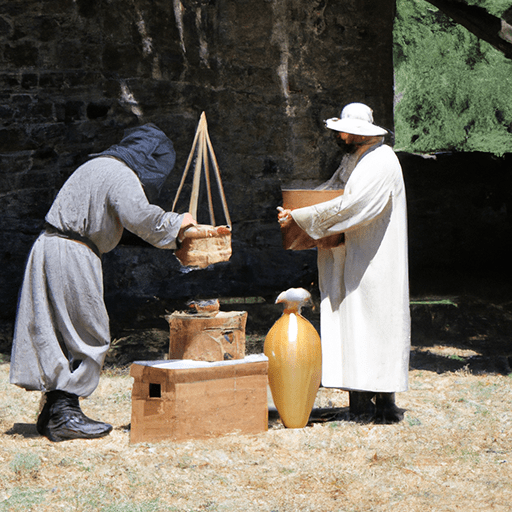
Medieval beekeeping practices were sustainable, eco-friendly, and more manageable as compared to modern practices. Applying these practices in modern times could result in better quality honey and wax, promote biodiversity, and reduce negative impacts on the environment.
Adopting these techniques may require additional effort and knowledge, but in the long run, it is worth the effort. Furthermore, managing bees in their natural habitat, the way medieval people did, is an essential step towards sustainability and environmental conservation.
Conclusion
Beekeeping played an important role in Medieval society and was a highly respected profession.
Honey and beeswax were valuable commodities and beekeepers were responsible for maintaining the hives and ensuring the health of the bees. The different types of hives and bees used in Medieval times provide valuable insights into the evolution of beekeeping practices.
